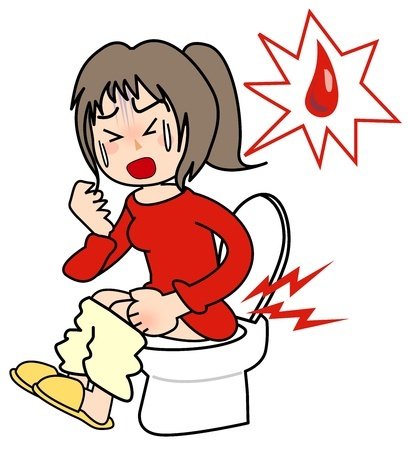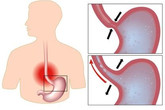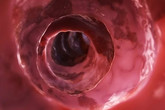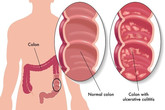How doctors diagnose hemorrhoids?
Hemorrhoids or piles are swollen, painful and inflamed veins of lower rectum. It is a very common condition. Almost 50% adults of middle age suffer from hemorrhoids. Hemorrhoids are not a life threatening condition because a number of effective treatment options are available for curing hemorrhoids. Hemorrhoids develop when the pressure on rectal veins increases. The rectal veins have the tendency to stretch when pressure is put on them but continuous pressure on rectal walls causes prolapsed, swollen and inflamed veins.
Diagnosing hemorrhoids
The most common causes of hemorrhoids are straining during bowel movements, chronic constipation, chronic diarrhea, pregnancy, coughing, sitting for too long or lifting heavy weight. When it comes to the diagnosis of hemorrhoids one must know that hemorrhoids are of two types: external hemorrhoids and internal hemorrhoids.
External hemorrhoids are visible on the surface of anus and are usually painful while internal hemorrhoids are located inside the rectal walls and are not visible on general examination.
Internal hemorrhoids are not painful so most of the times patients remain unaware of this condition. People suspect that they have hemorrhoids when they see blood in their stool. But sometimes bleeding during bowel movement is not the confirmatory sign of hemorrhoids.
So, the consulting a physician is required to confirm that the condition you’re suffering from is hemorrhoids and nothing else. The doctor will evaluate your symptoms and will do certain tests and procedures to reach a final diagnosis.
The doctor will proceed in the following order before making a diagnosis:
Medical history
Medical history of a patient is one of the crucial steps in deducing a diagnosis. No doctor can jump directly to the physical examination by skipping the history of patient. The doctor will ask the patient questions about his signs and symptoms, previous medical conditions, medication and personal habits. All these details are integrated to make some preliminary diagnosis. For example in case of hemorrhoids, the history of abnormal bowel movements or constipation might be an indication towards hemorrhoids or plies.
Typical signs and symptoms of hemorrhoids are most helpful in concluding a diagnosis. Some of the commonly presented symptoms of hemorrhoids are:
- Blood in stool or on toilet paper during wiping
- Anal itching
- Pain during bowel movements
- A lump or mass located near to the anus
- Fecal leakage
These characteristic symptoms will give a rough idea about hemorrhoids but nothing can be said with certainty until physical examination and further tests are done. Bleeding must be reported immediately to a health care provider because it might be the sign of some other disease of gastrointestinal tract like tumors.
Physical examination
Although clinical symptoms of a patient are helpful to some extent in making a diagnosis but they may overlap with the symptoms of some other gastro-intestinal disorders.
To rule out any other medical conditions, the doctor will do physical examination of the patient in a step wise manner to establish a diagnosis. If the doctor suspects hemorrhoids, the first examination he will do is “rectal examination”.
How rectal examination is done?
Digital rectal examination is the first test done to detect the presence of piles. It is a very simple procedure as compared to other diagnostic procedures.
The doctor will ask the patient to either bend on a table or lie down on one side with the knees bending towards chest. Both these positions will enable the physician to perform the examination in a better way. Once the patient assumes one of the above postures, the doctor will spread the buttocks apart to clearly examine the external anal area for any abnormalities.
The doctor will look for prolapsing hemorrhoids, lumps, swelling and redness. After external examination, the doctor will insert his lubricated gloved finger inside patient’s rectum to feel any growth, mass or abnormality. If doctor finds any abnormality within rectum, he will recommend further test to confirm whether it is hemorrhoid or not.
Visual inspection and examination
Rectal examination only gives a rough idea about the abnormality in the rectum. These abnormalities in rectum can be due to various conditions. So to confirm that either this abnormality is due to the hemorrhoids or some other cause, the doctor will perform other procedures like anoscopy, proctoscopy and sigmoidoscopy. These procedures enable the doctor to have a look inside the rectum of the patient.
These visual procedures not only help in the diagnosis of external hemorrhoids but also make the internal hemorrhoids visible as well. While at the same time, the visual inspection of rectum and anal canal will help in ruling out the possibility of other gastro intestinal abnormalities like tumors, polyps and inflammation.
- Anoscopy. In anoscopy, a special instrument called anoscope is inserted into the rectum to look for some changes in anal lining and rectum. Anoscope is a short, rigid, hollow tube of length of 3-4 inches, which is equipped with a light source. After lubrication, the anoscope is inserted into the rectum of the patient. The patient will be asked to strain as it will make the hemorrhoids more prominent and easily visible. The light thrown by anoscope illuminates the internal lining of rectum, making it possible for doctor to diagnose hemorrhoids.
- Proctoscopy: Proctoscopy is just like an anoscopy. The only difference is in the length between these instruments. Proctoscope is a bit longer than anoscope with the length of 5 inches. It is a rigid, hollow metal tube that is inserted into the rectum after lubrication. Proctoscopy is better than anoscopy because it allows the deeper examination of rectum.
- Sigmoidoscopy: Sigmoidocope is used for even deeper examination of colon, rectum and anal canal. It a flexible and thin tube about 2.3 ft fitted with lens system at one end. Once it is inserted inside into the rectum, after lubrication, the images of internal aspect of sigmoid and rectum can be seen on the display monitor attached to it. If doctor finds any mass or polyps, he might take some samples with the help of sigmoidoscope for further examination. This procedure is actually done to rule out the possibility of colon cancers.
| Written by: | Michal Vilímovský (EN) |
|---|---|
| Education: | Physician |
| Published: | March 9, 2014 at 8:07 AM |
| Next scheduled update: | March 9, 2016 at 8:07 AM |
Related articles
Get more articles like this in your inbox
Sign up for our daily mail and get the best evidence based health, nutrition and beauty articles on the web.








Ache in left arm that you should not ignore
Alkaline water dangers: why you should not drink it
How to Avoid Sleepiness While Studying?
23 Foods That Increase Leptin Sensitivity
Low dopamine (e.g. dopamine deficiency): causes, symptoms, diagnosis and treatment options
Swollen taste buds: the ultimate guide to causes, symptoms and treatment
Thin endometrial lining: causes, symptoms, diagnosis and treatment
Pimples inside nose: the complete guide
Holes in tonsils: definition, symptoms, treatment and prevention
How to deal with an ingrown hair cyst
Allegra vs. Zyrtec vs. Claritin
How to get rid of phlegm (excessive mucus) in throat? Detailed guide to medical and home remedies, symptoms and causes
What causes stomach ache after meals?
Allergy to penicillin and alternative antibiotics
Liver blood test results explained